Video Feature & Web-Exclusive Interview
Musician: MITCH GALLAGHER
Album:Foundation
Mitch Gallagher is a guitarist and composer. The tone on his new album Foundationis exceptional—a thing of beauty. But this is not simply another guitar album. He has combined guitars and piano with an amazing rhythm section and stellar horns.
Gallagher was introduced to music as a child by his mother—who was herself a child recording artist with her siblings, The Fried Sisters. In grade school he sang in the boys choir and took up trombone, which he played until high school. But his musical life came into focus when he was given a copy of Kiss Alive!, which led him to take up the guitar at age 15. Armed with a cheap guitar purchased with money earned working at his father’s plumbing shop, he began teaching himself to play along with the records of the stadium rock heroes of the day. Before long, he and his brother had formed their first rock band, Blitz, in their parents’ garage. Numerous gigs at school dances and parties soon followed.
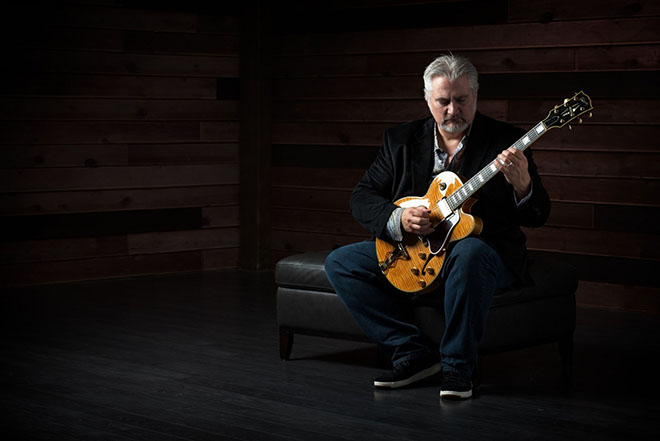
Gallagher’s graduate studies at the University of Missouri in Kansas City included music composition and classical guitar. He toured as lead guitarist/vocalist in rock and country bands, and also played with big bands, fusion and experimental music groups, and as a classical and steel-string guitar soloist. His compositions cover genres from classical to experimental to jazz to heavy metal. Prophecy #1: At First Glance, an experimental percussion ensemble/synthesizer work based on the Fibonacci number series, received a 1991 NARAS (Grammy) award in the Best New Music/New Classical category.
As a guitar tone expert and music technology specialist, he teaches college courses, lectures, gives clinics and workshops, consults with pro audio manufacturers, and speaks at festivals, conventions, and conferences around the world. He is a published author of many books. He has been the Editorial Director for Sweetwater since 2005, where he has hosted more than 1,500 videos—artist interviews, product demos, instructional videos, and more. He performs regularly on guitar and vocals with the band Expanding Man.
We talked with Mitch Gallagher about composing music, playing guitar, his musical influences and how he got that amazing tone on his new release—the 5-song EP, Foundation.
MITCH GALLAGHER Interview
with M Music & Musicians magazine publisher,Merlin David
How did Foundationevolve?
This is what I call an “opportunity” project. I found out that Keith Carlock (drums), Adam Nitti (bass) and Michael Whittaker (keys)—were coming into Sweetwater Studios for a session. I thought, wouldn’t it be cool to grab those guys and lay down a few tracks? They agreed to come in a day early to track. I figured we could lay down basic tracks for five songs. But I didn’t have any songs ready to go. So for a couple of weeks, I spent every waking minute I wasn’t at work writing. Somehow I got it all done. I was literally printing out the charts for the musicians—minutes before the session. There’s nothing like a deadline to make you productive.
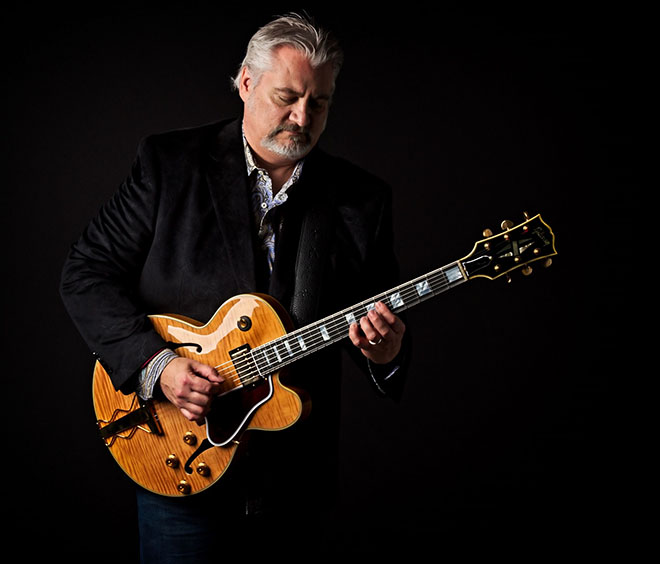
That’s an amazing group of musicians. Did anyone else help you?
I took the basic tracks home and began putting down my “keeper” guitar parts. I heard my friend Carl Verheyen was going to be at Sweetwater, and I asked him to add guitar to some tracks. We spent maybe two hours laying down his solos and some additional rhythm parts.
We love that this is definitely not a typical guitar album.
One goal I had for this project was not to make it a “guitar” album. I wanted the focus on the songs. I thought adding horns could really help achieve that. My friend John Hinchey, who is an incredible arranger and trombonist from Nashville, put together horn-section arrangements for three of the songs. We went into Ocean Way Studios in Nashville one afternoon, and laid down the horns and Tyler Summers’ sax solos and melodies.
Was that the only studio you used?
I got the mixes probably 80% done working on my laptop in Sweetwater’s diner at lunch, in coffee shops, on airplanes, and in hotel rooms, as well as in my home studio. I then took the files into Sweetwater’s Studio C, where I did the final tweaks. There’s very little processing on the final mixes. What you’re hearing is really close to what we captured in the studio. I love that. I was after a final sound that was natural and real—like a band playing in a room.
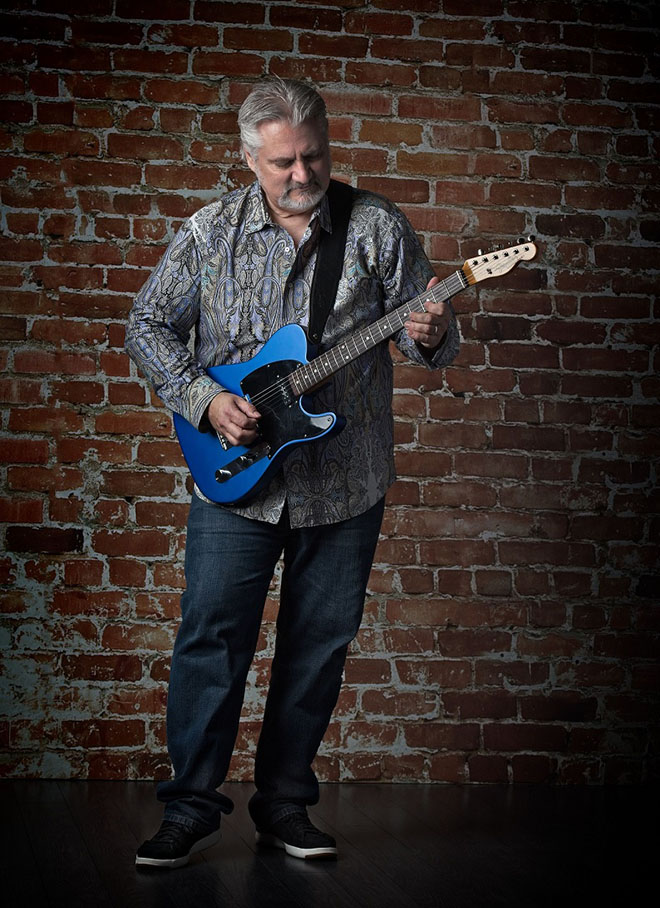
Who did the mastering?
Scott Hull from Masterdisk in New York did the mastering. I was adamant about not crushing the mixes or making them too bright or loud. I just don’t care for that sound. I wanted it to really breathe with dynamics that are faithful to what the musicians played. No one has complained that it isn’t loud enough, so I guess everyone knows you can simply turn up the volume control to make it louder.
Is there one song you are especially glad made it onto this album?
One song that I feared might not get recorded was “Finch Food”—a funky tune that goes off on various tangents. Someone once described it as “James Brown meets Frank Zappa.” It’s not thatcrazy, but it is challenging. It goes through a lot of time signatures and tempo changes, but I didn’t want them to be obvious or jarring. I wanted it to flow, with the listener unaware of what was going on in the infrastructure. I was afraid it might take too long to put it together given the time we had for the session. It’s a testament to the players that they could get that piece tracked in a couple of takes.
This album could be called Tonality—the sounds you got were exceptional. We loved how you combined guitars and piano with a kicking rhythm section and stellar horns. What was the key to making that all come together so well?
Thank you. I worship at the altar of great sound quality, and I worked hard to get the sounds. I was actually approached by a manufacturer of high-end studio monitors, asking if they could use the mixes as demo material for their speakers at trade shows. There are several key elements:
- Capture great sounds in the room, at the source.
- Listen with a microscope and cleanup everything you can.
- Arrange and mix carefully—each part has to live in its own part of the frequency spectrum and the stereo field.
- I use a spotlight approach to mixing: at any given point, one—and only one—thing has the focus.
- Rather than mixing to the lowest common denominator (low-quality earbuds), I mixed to sound great on the best audiophile system.
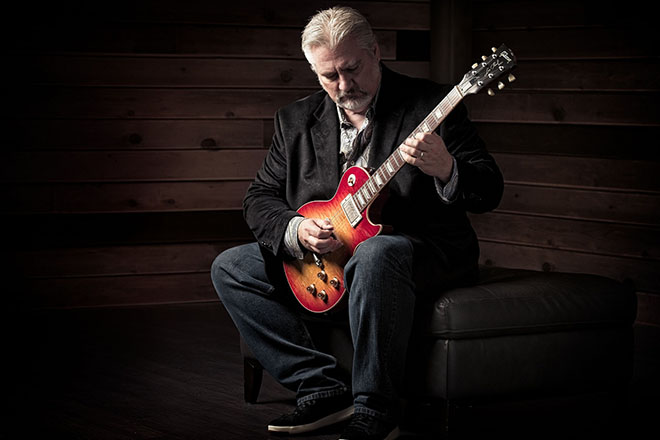
The simplicity of “White Iris” is especially amazing.
“White Iris” is one of my favorites, in part because it came out so different from how I originally envisioned it. I had a much more dense and layered guitar arrangement in mind. But when Michael Whittaker played the piano part, it was just so beautiful. I knew that if I forced additional guitar parts in there, it wouldn’t have the same vibe. So, and this was the hard part, I kicked my ego to the curb and took myself off the track, except for doubling the melody with the sax and playing a solo. Hard as it was to cut literally all of my rhythm guitar parts, it was the right call to make.
What insight did these amazing top-level musicians bring to your music that helped you expand the interpretation of these songs ?
It was an awe-inspiring experience working with musicians who play on that level. We chose a song, ran it down once, talked about it, then started recording it. We never did more than two takes for a song. What you hear on the CD is a complete first or second take. I can remember only two or three places where we went back and punched in to fix someone’s mistake. That was it. Basic tracks, finished.
How did you choose the musicians?
I’m a bit of a control freak, and what I learned is to let go. When you have musicians like that, let them do what they do. I mean, seriously, I’m going to tell Keith Carlock what he should play on the drums? The whole point of hiring someone for a session is to let them contribute what it is that they do, and that you can’t do yourself. Just give them a map, discuss the vibe you want, and sit back and enjoy as they make it better than you can imagine it being.
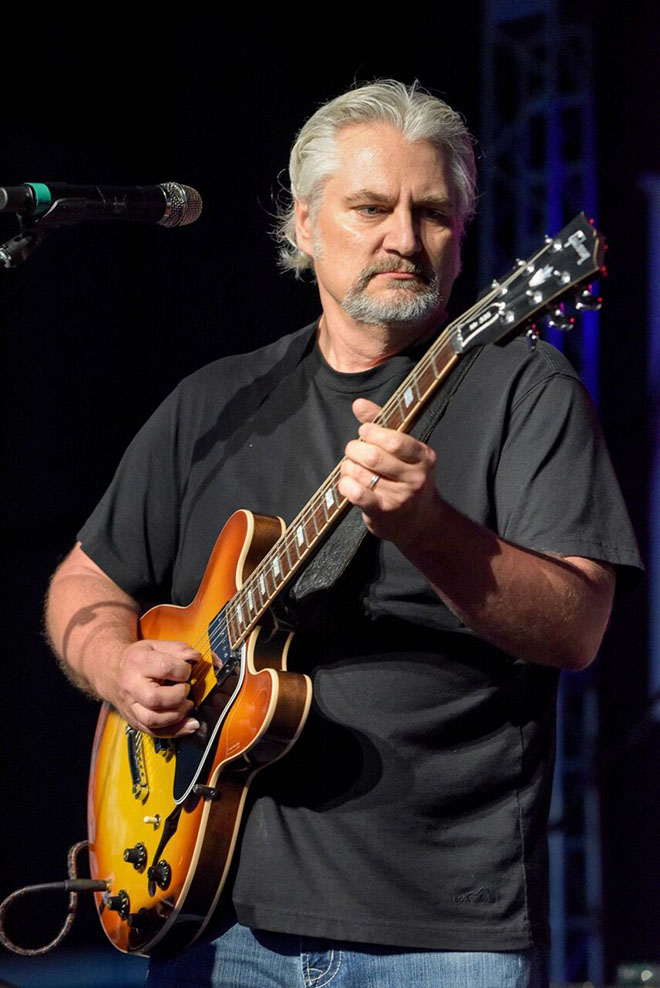
How were you able to let go?
I also learned that I don’t have to do everything myself. Mark Hornsby is a world-class recording engineer. John Hinchey is a great horn arranger. Scott Hull is a top mastering engineer. Even though I cando those jobs, that doesn’t mean I should. Letting those guys do what they do so well—allowed me to focus on the music.
Who originally inspired you to compose music?
I don’t know if it was so much a “who” as it was a “what.” I dabbled a bit in writing little songs here and there for some of my early bands. But I really started writing music when I went back to college after being on the road with bands, and took recording classes. I got a little drum machine and synth, and started writing music that I could record in the studio. That’s also where I developed my recording and music technology chops, and where I started building my studio rig—all of which has led to so many great things for me through the years.
What composing/songwriting tip would you like to offer?
“Subtractive arranging” is my approach to composing—it’s similar to how many book authors work. Basically, you separate the composing and editing/revising/fixing stages into two parts. When you’re composing, let yourself be free—no second guessing, no editing, no fixing. Turn off and ignore those complaints, uncertainties and critics in your head who say, “That’s not good enough” or “You need to fix that.” Then, when you’re done composing, go back with a rational, editor’s approach and start peeling away things that aren’t necessary, that don’t further the song. I’m ruthless at this stage. Everything is fair game to be cut. Of course, it’s easier said than done. (Laughs) But developing the ability to let go of being precious about your ideas really is the key.
How do you start the writing process?
At the most basic, I only need a guitar to write. I don’t record anything until later in the process. I find that if an idea is good, I’ll remember it. If I can’t remember it—it probably wasn’t that great to begin with.
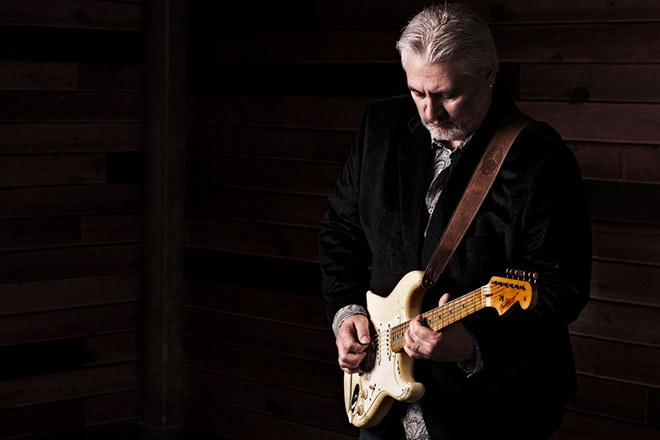
What instruments/equipment can you not live without?
Once I have a solid idea, I’ll take it to PreSonus Studio One, which has awesome tools for writing and arranging. I used Toontrack EZdrummer and EZkeys as the basis for my demos, and recorded guitar direct—using an amp-simulator plug-in. Then I moved the tempo map, etc., over to Pro Tools for the actual tracking sessions—because that’s what the studios used.
Which Top 5 Musicians inspired you to become a musician?
The first record I heard that really made me want to play was Kiss—the Alive!album [1975]. I started playing guitar when I was around 15, at the height of the stadium-rock 70s. I’d get home after school and immediately crank my guitar and start jamming with Ted Nugent. People may only know him for his politics today, but back in the day, he was huge. Rush and Boston. When I discovered Eddie Van Halen, it was all over.
What are your Top 5 favorite albums of all time?
I tend to listen based on the mood or phase I’m in. So my answer might be totally different tomorrow. But if I was going to a desert island, and only had room for six (see how I slipped an extra one in there, before anyone noticed), these would be in there. And I’d figure out a way to sneak in a couple of hundred more:
Last Nite(1986) – Larry Carlton
Aerial Boundaries(1984) – Michael Hedges (or Live on the Double Planet, 1987)
Champagne Jam(1978) – Atlanta Rhythm Section
Live at Rockpalast(2014) – Robben Ford (or Talk to Your Daughter, 1988)
Van Halen(1978) – Van Halen (tough call, but probably this first record)
Ah Via Musicom(1990) –Eric Johnson
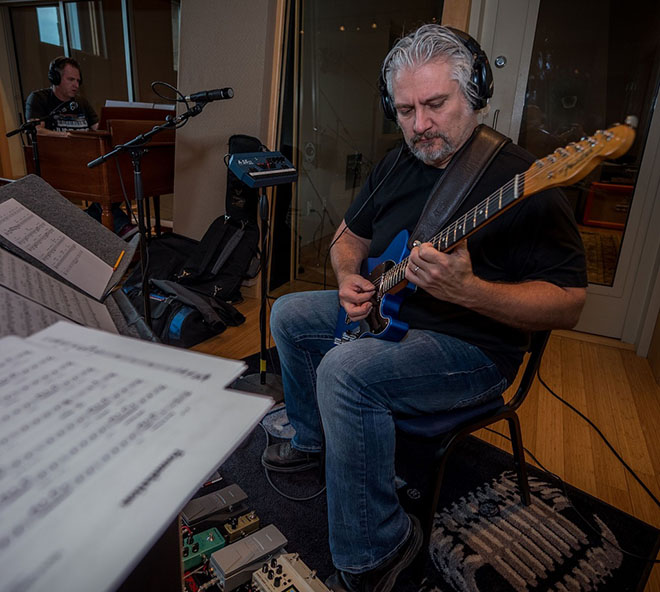
Do you remember the first time you heard one of your songs in a public format?
When I was in college, I had an opportunity to write music that ended up being used in a recruiting film for the school’s football team. I still remember how exciting it was to watch the video (VHS cassette) and hear my music in the film. That was one of those moments where I thought, “This is so great, I want more of this!” and was a big part of my decision to go on to study music composition.
Tell us a “pinch me” moment when you said “Wow, this is really happening to me!”
It was spread over two nights: Robben Ford—one of my all-time favorite guitarists—was recording at Sweetwater. I had done an interview with Robben in the afternoon for a video. But unbeknownst to me, my amazing wife, Fe, secretly arranged for and surprised me with a private guitar lesson and dinner with Robben that evening, which was mind-blowing. How cool is that?
What’s the other pinch me moment?
The next night, some friends were playing a gig at a local bar, and Robben came out to sit in. I was able to get up at the gig and sing with Robben and the band. Those two nights were surreal, bucket-list moments I’ll never forget.
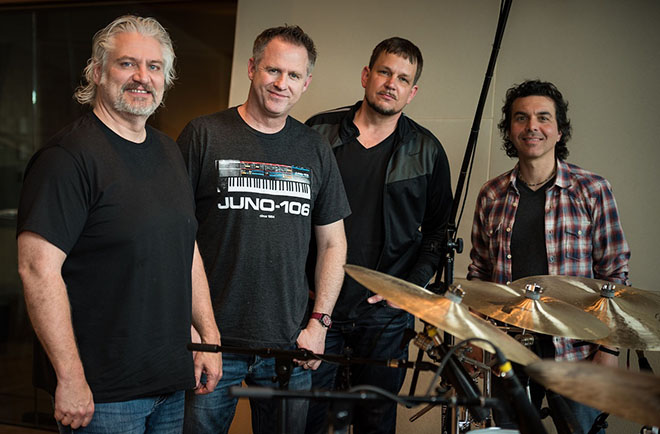
What Performing Rights Organization are you with?
I’m a BMI member. I hate to admit it, but I really haven’t taken advantage of what they have to offer.
What is the best advice someone has given you?
I was talking to Carl Verheyen during the mixing stage of Foundation, and lamenting how long the project was taking, and how it can be hard to know when art is finished. He said, “Get it done. Put it out so you can get on to the next project. This is a document of where you are right now. Do it as well as you can, learn from it, and do even better on the next one.” Great advice for a perfectionist like me.
What’s next?
Definitely another album or EP. I had so much fun doing this project—I can’t wait to start the next one. The question is—what to do? I have a bunch more songs in the vein of what’s on Foundation. But I have also studied classical guitar for many years, and would like to do an album of that material. And, I have around 25 fingerstyle steel-string guitar solo instrumentals that I’d like to record. And, I’ve been talking with the vocalist of a well-known group about doing an album together. I’ve got enough to keep me busy for a long time.
What’s the best place for new fans to stay updated?
www.MitchGallagher.com, and my Facebook page. Also, stay tuned for new things on my YouTube page.
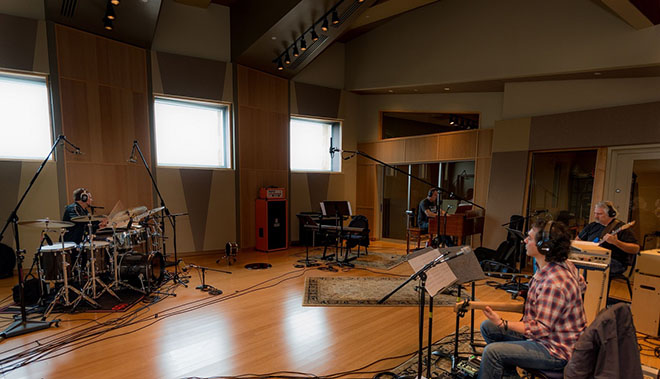



comment closed